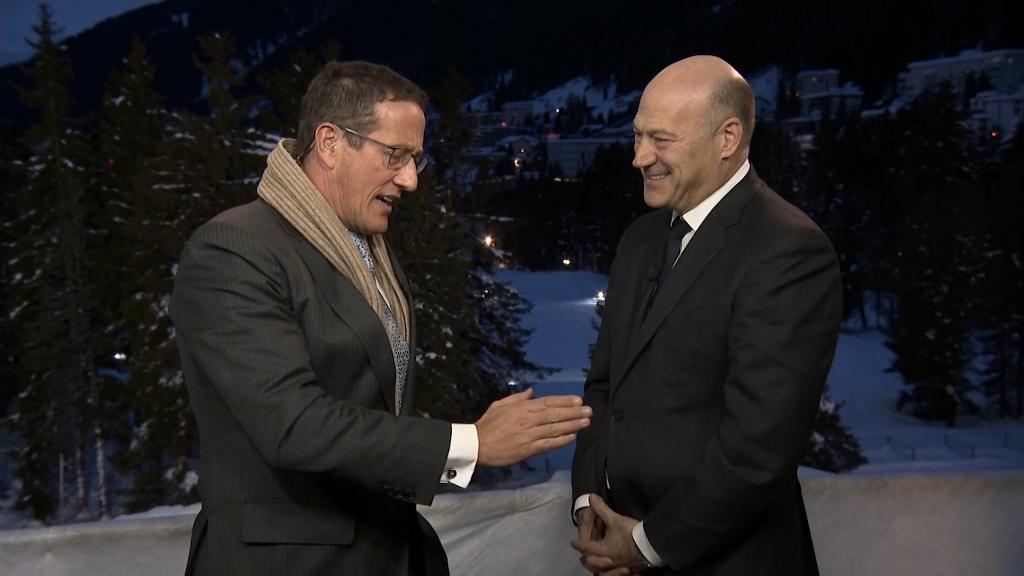
President Trump is expected to use his State of the Union address Tuesday to announce his long-awaited plan for investing in America's infrastructure.
But his aides have already spoken publicly about the main features of the plan, and a draft obtained by Axios last week spells out some details. The White House has declined to comment on the leaked plan, which may well change by the time it's expected to be presented to Congress in February.
Based on that information, here are a few questions we can answer about Trump's infrastructure plan.
How big would it be?
Trump has said repeatedly that he plans to invest $1 trillion in repairing and upgrading America's infrastructure.
Only $200 billion of that, however, would come from direct federal spending, according to White House aides. The rest is supposed to come from state and local governments, which are expected to match any federal allocation by a four-to-one ratio. That's a reversal from precedent, in which the federal government has picked up around 80% of the cost of big projects.
"What we really want to do is provide opportunities for state and local governments to receive federal funding when they're doing what's politically hard, and increasing investment in infrastructure," DJ Gribbin, Trump's special assistant for infrastructure, said to the United States Conference of Mayors last week.
How would the money be split up?
According to the draft plan published by Axios, $100 billion of the federal infrastructure spending would be parceled out as incentives to local government entities. No one state may receive more than 10% of that total.
An additional $20 billion would go toward "transformative projects." These are defined as "exploratory and groundbreaking ideas that have more risk than standard infrastructure projects but offer a larger reward profile," such as Elon Musk's Hyperloop. Federal funds would be allowed to cover a greater share of each of these projects.
Another $50 billion is earmarked for rural block grants, most of which will be given to states according to a formula based on the miles of rural roads and rural population they have. States can then spend that money on transportation, broadband, water, waste and power projects.
The rest of the money would support infrastructure-related undertakings. Among them: an "Interior Maintenance Fund" that would administer money from mineral and energy development and the creation of new federal lending programs. The program would also expand the federal government's capacity to buy and sell land for economic development.
Related: America's biggest infrastructure nightmare
What else might the plan do?
The Trump administration has said it wants to shorten the time and expense of getting federal permits by consolidating the reviews conducted by different agencies into what Gribbin called "one federal decision."
"I think the thing that we're most excited about is the opportunity when it comes to permit approvals," Gribbin told the Conference of Mayors last week. "There's no reason why we can't analyze a project and get it done in a two-year window."
Currently, the process can take five to 10 years — a problem that former President Obama also tried to address through an executive order that instructed agencies to use better technology and work concurrently on their reviews in order to cut down on approval times.
The proposal echoes one made in 2015 by a nonprofit group called Common Good, which recommended limiting litigation around infrastructure permitting — one of the main reasons approvals get delayed — and putting one person in charge of environmental review. Other experts, including the Congressional Research Service, have since cast doubt on the report's claim that trillions of dollars are wasted during the permitting process, pointing out that state regulations, rather than federal ones, are often the cause of delays.
Related: States see Trump's infrastructure project slipping away
How would the plan be paid for?
At the Conference of Mayors, Gribbin explained that the Trump administration is not proposing a specific funding mechanism for the infrastructure plan, saying that will be a conversation with Congress. But that discussion just got a lot harder following the passage of a tax plan that is expected to expand the deficit by over a trillion dollars over ten years.
The U.S. Chamber of Commerce has proposed hiking the federal gas tax, which hasn't gone up since 1993, to raise $394 billion over 10 years. Gribbin said the White House is open to that idea, but hasn't ruled anything out.
Over the past year, Democrats have accused Trump of seeking to create the $200 billion infrastructure fund by proposing cuts to other infrastructure-related programs. Gribbin committed to leaving major pots of money intact, such as the Highway Trust Fund, but said that some existing spending may be "repurposed."
"I can't tell you there's going to be no cut in any infrastructure programs in the federal government," Gribbin said.


